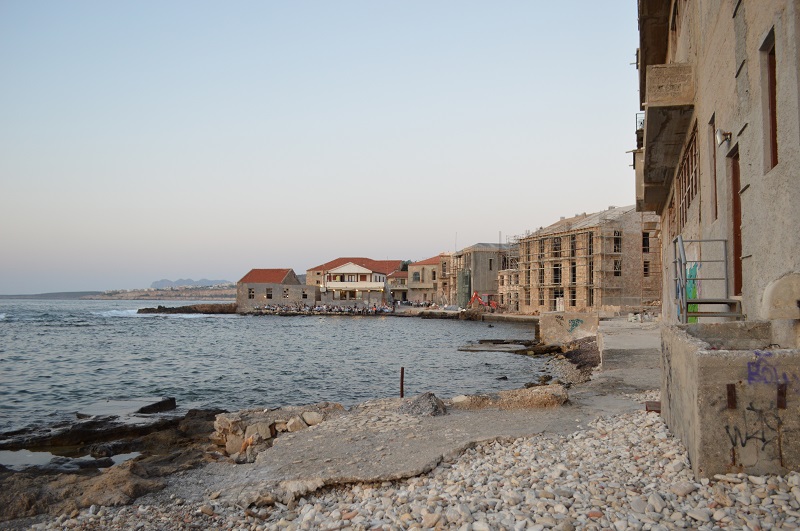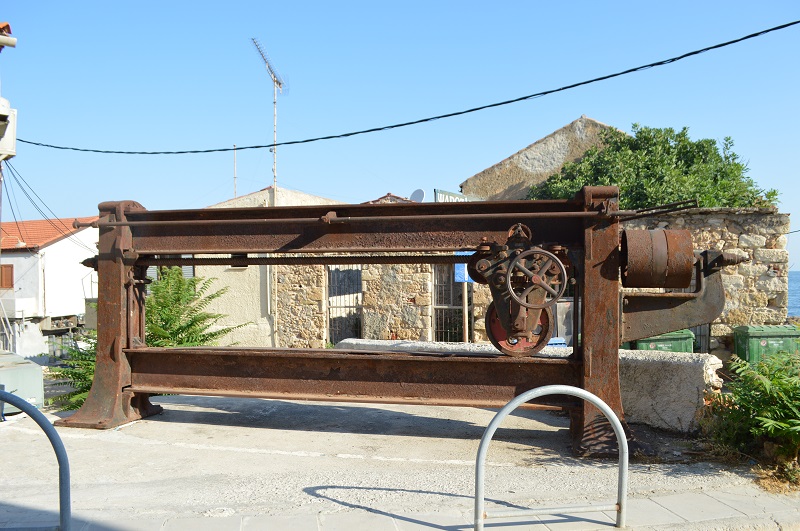
Many people who visit Chania and maybe Heraklion do not really know the existence of a trade now almost extinct but for one Tanner left in Chania.
The tanneries known to the locals as “Tabakaria”, tabak is a Turkish word which means tannery, were once one of the primary sources of income for the local communities in both prefectures. In Heraklion the trade of a Tannery dates back to the early 1710s and in Chania they are established when Egyptian Rule takes over the island between the years 1830-1840. As Chania did not have any tanneries as Heraklion did, the Egyptian regent rolled up his sleeves and got industrious trying to create as many new and contemporary businesses as possible that could make money for the Egyptian king at the time. As tanneries needed tannin to help harden and give the characteristic colour tan we see in natural leather, the Regent went one step further and asked for the aid, experience and knowledge of five specialists from Syria in the growth of Oak trees for its acorn as its shell when crushed and mixed in water gives the desired result. That is why certain areas in Crete actually have so many Oak trees and so many families, who were trained from the aforementioned specialists at the time, managed to make an income from the tree; in order for leather to be processed.
Tanneries are not something new. They were a trade well known since ancient times as soldiers needed them to dress their feet and have carry bags with them for the long road to conquering new land. It’s just that Crete has solid proof in buildings and documents of a trade that gave serious amount of work to many men and money to their community.

What we are left with today are some ghost buildings that are now, fortunately, valued as worth preserving and restoring which gives a new breathe of life to the area of Tabakaria in the area of Halepa in Chania, but not so much, unfortunately, for the buildings in the area of Stomio in Heraklion. It’s great to see this once forgotten area in Halepa now slowly being restored to beautiful boutique hotels and homes or offices. It is one of my favourite places to visit and look out west towards the old Venetian lighthouse just a few kilometers away, almost neighboring one another. The sunsets but even the sunrises in this area of Halepa are quite magical.
The early process of treating an animal hind -cow, goat, sheep- unfortunately involved the excrement of dogs of which there was a man whose profession was just that: to collect and sell dog poop to tanneries. I’m guessing he wasn’t the most popular lad for the ladies back in the day of living to work and work to live, but one couldn’t be picky. The only reason why the excrement was necessary was to aid the process of the hairs that remained on the skin to dissolve in the water-poop mixture. As nothing was to be wasted the hair of a goat hind would be sold to make brushes and rope while the remaining short length of the wool of the sheep hind would be sold as stuffing for saddles made for horses, mules and donkeys. Literally nothing of the animal that would be slaughtered would ever go to waste. Every part of it had its use. But no poop these days so do not worry. They found an equally good solution with modern chemistry. But the smell is still something to be desired. You know you are close to a tannery from the sheer stench alone!
The entire process alone from hind to leather dyed or natural has several steps all depending if it is cow hind or sheep and goat. Cow hind needs a considerable amount of time to be softened then hardened and be pressed to have an even thickness. Many stages of different water solutions with another chemical plus the natural and final stage of the crushed acorn shells give us what we universally known as leather. Plus the shaving, stretching, drying and flattening for equal thickness…The process differs very little around the world.

It is a highly unhygienic life and job that of a tanner. Nor does it do many favors to the environment either. However until a permanent solution is found to both, this is how the status quo stands.
As of why the “Tabakaria” are located in the area they are today in the area of Halepa in Chania in particular are three: 1) they are close to the center of town, and businesses they would sell their leather to, but far enough to not intervene with everyday life with its commercial waste water and stench.
2) There are natural sources of underground brackish water springs that are needed for the entire process of the treatment of the hind as only salt water would damage the process.
3) The sea shore close to the buildings are scattered with rocks that form shallow pools again in the aid of tanning the hind with the acorn solution.
If you are looking for these old buildings, now being restored; at least in Chania, you can call them by their Greek name too, Βυρσοδεψία=Virsothepsia. It means tanneries. You call it out and people, you can be sure, will show you how to get to this unique area of Chania. I hope you enjoy what you see as much as I do.
Full credit goes to the rightful owners of the photos
The Terra Creta explorer
